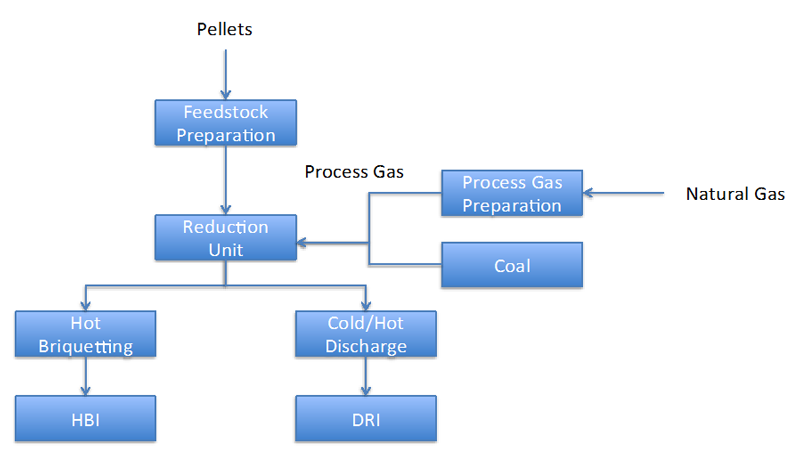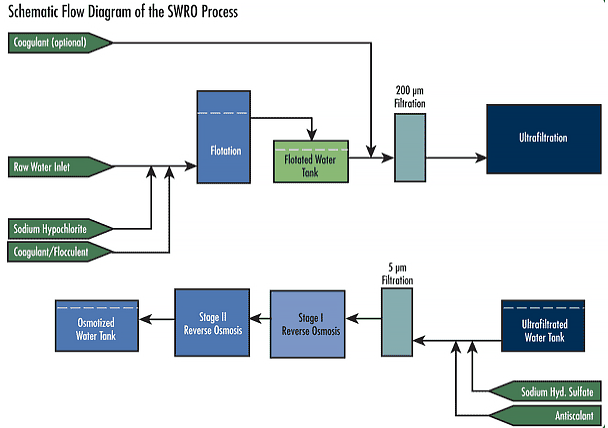Projects
A group of engineers and investors in the mining and metal industry established a steel complex in the Qeshm Island free zone. This idea complied with the goals and objectives of the 5th development plan of Iran. The project was to be implemented in three phases comprising of two jetties, two DRI plants, a pelletizing plant, a power plant and two steel producing plants. List of shareholders members:
Group of Investors
- Gol Gohar Iron & Steel Development Co.
- Gol Gohar Mining & Industrial Co.
- Chadormalu Mining & Industrial Co.
- Iranian Ghadir Iron & Steel Co.
- Ghadir International Industries & Mines Development Co.
- Mofid Industrial & Mining Co.
- Petro-Mofid Co.
- Sina Development Co.
According to Iran’s Comprehensive Steel Plan, it is expected to produce 54 million tons of steel by 2025. This means that if 8 million tons is produced by blast furnace, the other 46 million tons will be produced by the direct-reduction method. As a result, the demand for the middle products in the steel production chain is predicted as follows:
Construction of the Persian Gulf Bridge on the northern coast of the island between two points i.e. the Pahl Port in the Hormozgan Province and the old Laft Port in the Island of Qeshm where the shores of the island touch the mainland over a stretch of 1800 meters are currently in progress. Studies of phases 1 and 2 of the bridge have now been completed. According to the consulting engineer's estimate, the construction cost of this bridge will reach $100,000,000. This bridge has rail and road lines. In particular its rail lines are significant since it connects the Kaveh jetty to the nationwide railroad system of Bandar Abbas-Turkmenistan and will facilitate the passage of goods to other CIS states.
The Kaveh Jetty, which had a berthing capacity of 40000 tons during phase 1, has been recently exploited with a berthing capacity of up to 100000 tons due to appropriate water currents and a deep coast of 20 meters. It is necessary to mention that this characteristic is not available throughout the southern coasts of Iran. With full exploitation of the jetty, big ships like Panamax (Ships’ lengths are restricted to 275m and maximum width is slightly more than 32m with cargo intake usually restricted to approximately 52,500 tons) will be able to directly berth in Iranian jetties. This means that L.D.F. index at Iranian coasts has reached a high level both in import and export areas and will create a new level of sea transport economy for the country. Anchorage for ships in this zone includes two important ports such as Bahman and Dargahan. The Mooring berths include Oil Co. jetty, Fajr jetty, Dargahan jetty, Loft oil terminal jetty, Soheili fisherman’s jetty, Tabl jetty, Basaeido new jetty, Salkh jetty, Kandalo fisherman jetty, Ramchah jetty, Shahid Zakeri jetty, Goran harbor and East Chahoo port. Construction and development of Laft & Hamoon, Sangi, Dargahan jetties, Construction of the large kaveh jetty for ships between 10,000 and 100,000 tons under construction, and design of several jetties with different sizes that could increase marine transportation for loading and discharging of light and heavy commodities on the island.
Direct reduced iron (DRI) is technically defined as sponge iron which has been reduced to metal without having been melted. DRI production process is one in which the solid metallic iron is obtained directly from solid iron ore without subjecting the ore or the metal to fusion.
Major DRI production processes are gas based. Feed material in a DRI process is either iron ore sized to 10 to 30 mm or iron ore pellets produced in an iron ore pellet plant.
In the gas based plant the reactor, the reduction reaction takes place is a shaft furnace. The shaft furnace works on counter current principle where the iron ore feed material moves downward in the furnace by gravity and gets reduced by the up flowing reducing gases. The pressure and temperature in shaft furnace in HYL process is 5-6 bars and 800-850 deg C. The same in Midrex process is 1-1.5 bar and 800-850 deg. C. The advantages of DRI are include:
- DRI has low Sulphur and phosphorus content as compared to scrap.
- It allows steelmaking to dilute metallic residuals in scrap.
- Since it is manufactured it has a uniform composition.
- It has a uniform size.
- It allows improvement in productivity.
Pelletizing is a process that involves mixing very finely ground particles of iron ore fines of size less than 200 mesh with additives like Bentonite and then shaping them into oval/spherical lumps of 8-16 mm in diameter by a pelletizer and hardening the balls by firing with a fuel. It is the process of converting iron ore fines into “Uniformed Sized Iron Ore Pellets” that can be charged directly into a furnace used in the production of Direct Reduced Iron (DRI). Advantages of this process are as follows:
- Pellets have good reducibility since they have high porosity (25-30%). Normally pellets are reduced considerably faster than sinter as well as iron ore lumps. High porosity also helps in better metallization in DRI production.
- Pellets have a uniform size range generally within a range of 8 -16 mm.
- Pellets have spherical shape and open pores which give them good bed permeability.
- Pellets have low angle of repose which is a drawback for pellet since it creates uneven binder distribution.
- The chemical analysis is uniform for it gets controlled during the beneficiation process. Fe content varying from 63% to 68% depending on the Fe content of Ore fines. Absence of LOI is another advantage of the pellets.
- Pellets have high and uniform mechanical strength and can be transported to long distances without generation of fines. Further it is resistant to disintegration. High mechanical and uniform strength of pellets is even under thermal stress in reducing atmosphere.
Power plant
Connecting to the nationwide electricity network and implementing the following projects will supply electricity across the Qeshm Island. These projects include setting power transmission lines and a 230.63 KV electricity post throughout the Qeshm Island, implementing an 85 kilometers high voltage 63 KV line plan for west and east coasts, launching 55 kilometers of 400 V low voltage line, Improving the installed capacity from 10000 KVa to 90000 KVa for the next five years, establishing 165 MW power plant, developing the quality of the island network and finally, building new stations for supplying electricity to industrial townships
Steel making
The method used is called Electric steelmaking method. This type of furnace takes steel scrap, DRI, HBI (hot briquetted iron which is compacted DRI) or pig iron, which are solid to start with, and melts them to produce steel. The most common feedstock is steel scrap. In the EAF, electricity provides the power to melt the feedstock, although many furnaces also use oxygen, carbon and hydrocarbon fuels to accelerate the process. There are some removal of impurities during EAF steelmaking.
Electric arc furnaces range in capacity from a few tons to as many as 400 tons, and a steel melting shop can have a single furnace or up to three or four. In brief, these furnaces melt steel by applying an AC current to a steel scrap, DRI, HBI charge by means of graphite electrodes. It requires a tremendous quantity of electricity. The melting process involves the use of large quantities of energy in a short time and in some instances the process has caused disturbances in power grids. These disturbances have usually been characterized as ‘flicker’ (brief irregularities in voltage a fraction of the 50-60 Hz cycle in length), and ‘harmonics’ (irregularities that tend to occur in a pattern repetitive to the 50-60 Hz cycle).
The EAF operates as a batch melting process producing batches of liquid steel. EAF operating cycle is called tap to tap cycle or a heat and is made up of the components namely (i) charging of the furnace, (ii) melting phase, (iii) refining phase, (iv) de-slagging operation, (v) tapping of liquid steel, and furnace turnaround. Tap to tap time is normally less than 60 minutes in modern EAFs. Some twin shell furnace operations are achieving tap to tap times of 35 to 40 minutes.
Water Desalination Plant
According to the new research which has been developed for desalination plants in the Persian Gulf, the water in the Persian Gulf is known to be challenging for reverse osmosis (RO) seawater desalination. This results in seawater with high salinity, high organic content and microbiological activity posing a very high fouling risk for the RO membranes. Carefully designed pretreatment is absolutely essential to ensure economical plant operation. In difficult waters, ultrafiltration (UF) has proven to be the best technology as the final pretreatment step prior to RO. UF delivers superior water quality compared with conventional treatment due to the defined, very fine pore structure. It delivers a continuously good filtrate quality independent of feed water quality variability caused by seasonal changes. Increasing steel production capacity from 1.5 to 3 Million tons needs expansion include seawater desalination plant located near the Kaveh Jetty, placed in the industrial city of Qeshm Island. The water treatment plant primarily covers the steel mill’s demand for desalinated water for the steel production process. Secondly, it produces make-up water for the cooling water cycle.
The feed water which has been estimated for 1.5 Million tons is around 2,900,000 m3 per year as a total initial intake feed to the seawater desalination plant which is a blend of two different sources. The majority about ninety percent of the total feed water flow — is seawater coming from an open intake in the Persian Gulf. The remaining ten percent is low-salinity water coming from the rolling mill cooling water cycle. The water treatment plant can work with only seawater; however, in this case to reach the required water quality the total water output would be lower due to the increased feed water salinity. The UF system purifies the water of biological, organic and particulate contaminants before it enters the two-pass RO system where 366 m³/h of desalinated water are produced. The first-pass concentrate is discharged into the sea; the second-pass concentrate is recirculated to the feed of the first pass. The decision to use UF as a pretreatment system to RO was made based on the fact that the Persian Gulf is known for its very difficult nature. It is shallow and has little water movement due to its many small islands. As a result, the water can contain very high levels of turbidity, organics and bacteriological activity, especially in summer. The raw water silt density index (SDI) after 15 minutes exceeds 15 on a frequent basis. UF modules and membrane technology should reduce maintenance and repair cost, plant down-time, and it might increase protection for treatment steps downstream and operating safety.





